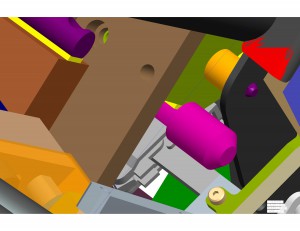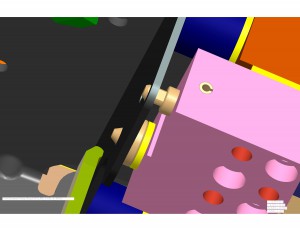In weld fixture design we often use the holes in the product for locating the product part in the fixture. What do you think designers should ask when considering pinning a hole?
The location of the hole in one product part can be precisely located in relation to the other product parts it is being welded to. This is done by using the right design methods.
Major design difficulties can occur if some questions are not addressed before starting the 3D modeling process.
What do you think designers should ask when considering pinning a hole?
What comes to mind for me is:
1) Is the hole location critical to the other parts it is welded to? If it isn’t it doesn’t mean I WON’T pin the hole, just that maybe I can use a looser tolerance between the pin and the hole diameters, and I won’t need to use an adjustment shim pack to fine tune the locations of the pin.
2) Will you be able to get the product out of the fixture if you pin the hole? Or, do you have to remove the pin before you are able to remove the product from the fixture? We will be going over how to use a straight action clamp in weld fixture design for removing a pin in future blogs.
3) Are there other holes in that same product part that are pinned? You need to take care here because you need to understand that there will be tolerance issues between the holes. Yet , two holes makes it easy to locate the part at just the right angle.
4) Will you need to rough locate the part before it is pinned so that it is easier and faster for the pin to find the hole, or the hole to find the pin?
For example, The product parts are dark gray. In this picture, the pink round part is a rough locator, along with other locators it gets the product part in close proximity to perfect. Then the removable purple pin with the help of a straight action clamp moves into place to hold the part in the perfect place while it is being welded.
5) Will you use a shoulder pin that can also act like a rest pad?
In this picture the left pin is a shoulder pin. The product plate (in dark gray) rests on the shoulder. The yellow part underneath it is a metal precision shim pack.
6) How will you prevent weld splatter from making the pin get stuck or welded into the hole?
As you see in the picture, the pins have chamfers on the ends where they protrude through the product plate. The pins should be harder than the material you are welding. That makes them last longer in the fixture and reduces the likelihood that the weld splatter will stick to them. The material of the pin depends on the material you are welding. In some instances you will need to add guards or shields to protect the pin from the weld splatter. There is also a protective coating that can be added to protect the pin from the weld splatter sticking to it.
Did I miss some questions? What else would you consider?
Please share this with a manufacturing engineer or machine builder that you know. We always can learn from the welders, assemblers, machinists and managers who work with our designs every day.
Susan Straley
Queen of Lean Machine Design
PS
Do you know someone with some singing or rapping talent? Video tape them singing our Shim King song and we will post it on our shim page and tweet it!








